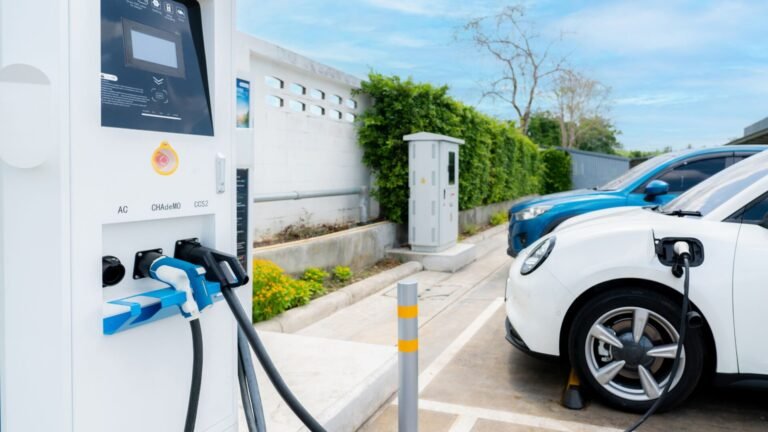Plastic pollution has emerged as one of the most pressing environmental issues of our time, with millions of tons of plastic waste entering our oceans and ecosystems each year.
The accumulation of plastic debris is devastating marine life, contaminating food chains, and causing widespread environmental damage.
As society grapples with this growing crisis, the role of renewable energy in combating plastic pollution has gained significant attention.
This blog explores how renewable energy can reduce plastic pollution, highlighting the innovative solutions and strategies that are paving the way for a cleaner, greener future.
By understanding these solutions, we can work towards a sustainable and pollution-free planet.
Understanding Plastic Pollution
Plastic pollution is a global problem that affects marine life, human health, and the environment. Traditional plastics, derived from fossil fuels, are non-biodegradable and can persist in the environment for hundreds of years.
The production, consumption, and disposal of plastic products contribute to greenhouse gas emissions, further exacerbating climate change.
The Role of Renewable Energy in Reducing Plastic Pollution
- Renewable Energy Can Reduce Plastic Pollution by Powering Sustainable Manufacturing Processes
One of the most direct ways renewable energy can reduce plastic pollution is by powering the manufacturing processes of plastic alternatives.
Using solar, wind, and hydroelectric energy to produce biodegradable plastics and other eco-friendly materials significantly lowers the carbon footprint of these products.
Sustainable manufacturing practices can drastically cut down the environmental impact of plastic production, contributing to a reduction in plastic pollution. - Renewable Energy and Plastic Waste Management
Effective waste management is crucial in addressing plastic pollution. Renewable energy can reduce plastic pollution by powering recycling plants and waste-to-energy facilities.
These plants convert plastic waste into energy, reducing the volume of waste that ends up in landfills and oceans.
By using renewable energy sources, we can make waste management processes more efficient and environmentally friendly. - Innovative Technologies: Solar-Powered Ocean Cleanup Devices
Solar-powered devices designed to clean up ocean plastic are an excellent example of how renewable energy can reduce plastic pollution.
These devices, such as the Interceptor by The Ocean Cleanup, use solar panels to power their operations, collecting plastic waste from rivers and oceans before it reaches the open sea.
This innovative use of renewable energy helps mitigate the impact of plastic pollution on marine ecosystems. - Bio-based Plastics and Renewable Energy
Bio-based plastics, made from renewable resources like corn starch, sugarcane, and algae, present a sustainable alternative to traditional plastics.
The production of bio-based plastics is often powered by renewable energy, making the entire lifecycle of these materials more environmentally friendly.
By shifting to bio-based plastics, we can reduce our reliance on fossil fuels and decrease plastic pollution. - Renewable Energy-Powered Transportation and Logistics
The transportation and logistics involved in plastic production and disposal contribute significantly to plastic pollution.
Renewable energy can reduce plastic pollution by powering electric vehicles (EVs) used in the transportation of raw materials and finished products.
EVs, charged with renewable energy, produce fewer emissions than traditional vehicles, reducing the overall environmental impact of the plastic supply chain. - Promoting a Circular Economy
Renewable energy is a key component of a circular economy, where products are designed to be reused, repaired, or recycled.
In a circular economy, renewable energy can reduce plastic pollution by supporting sustainable practices at every stage of a product’s lifecycle.
From production to disposal, renewable energy ensures that the processes involved are environmentally friendly and efficient.
The Future of Renewable Energy and Plastic Pollution Reduction
The potential of renewable energy to reduce plastic pollution is immense. As technology advances, we can expect even more innovative solutions to emerge.
Governments, industries, and individuals must collaborate to accelerate the adoption of renewable energy and sustainable practices.
Embracing renewable energy not only helps reduce plastic pollution but also addresses broader environmental challenges such as climate change and resource depletion.
Renewable energy sources, including solar, wind, hydro, and geothermal, provide clean and sustainable alternatives to fossil fuels.
By transitioning to these sources, we can significantly decrease the carbon footprint associated with plastic production and disposal.
This shift is crucial for achieving long-term environmental sustainability and reducing the detrimental impacts of plastic pollution on ecosystems and human health.
Renewable Energy and Policy Initiatives
Government policies play a crucial role in promoting the use of renewable energy to combat plastic pollution. Incentives for businesses to adopt renewable energy, stricter regulations on plastic production, and investment in research and development are essential steps toward a sustainable future.
By implementing these policies, we can create a supportive environment for renewable energy solutions to thrive.
One effective policy approach is to provide subsidies and tax incentives for companies that invest in renewable energy technologies and sustainable manufacturing practices.
This financial support can encourage businesses to transition away from fossil fuels and reduce their plastic waste.
Additionally, implementing stricter regulations on single-use plastics and promoting the development of biodegradable alternatives can further drive the reduction of plastic pollution.
Investment in research and development is also critical. By funding innovative projects and technologies, governments can support the creation of new materials and processes that are both environmentally friendly and economically viable.
Collaborative efforts between public and private sectors can accelerate the adoption of renewable energy and sustainable practices, leading to significant reductions in plastic pollution.
Corporate Responsibility and Renewable Energy Adoption
Corporations have a significant impact on plastic pollution and can lead the way in adopting renewable energy.
By integrating renewable energy into their operations, companies can reduce their environmental footprint and contribute to the fight against plastic pollution.
Corporate social responsibility initiatives focused on sustainability can inspire other businesses and consumers to follow suit.
Businesses can start by conducting sustainability audits to identify areas where renewable energy can be incorporated.
This might include using solar panels to power manufacturing facilities, transitioning to electric vehicles for logistics, or investing in energy-efficient technologies.
By making these changes, companies not only reduce their carbon footprint but also set an example for others in the industry.
Moreover, corporations can engage in partnerships and collaborations to advance sustainable practices. For instance, they can work with renewable energy providers, environmental organizations, and research institutions to develop innovative solutions for reducing plastic pollution.
These partnerships can lead to the creation of new technologies, processes, and products that benefit both the environment and the economy.
Additionally, transparent reporting and communication about sustainability efforts are essential. By sharing their progress and successes, companies can build trust with consumers and stakeholders, demonstrating their commitment to environmental responsibility.
This transparency can also encourage other businesses to adopt similar practices, creating a ripple effect that amplifies the impact of renewable energy on reducing plastic pollution.
Conclusion: Tamesol’s Commitment to a Sustainable Future
At Tamesol, we are dedicated to harnessing the power of renewable energy to create a cleaner, greener world.
Our innovative solutions and commitment to sustainability help reduce plastic pollution and protect our planet for future generations.
By embracing renewable energy, we can significantly mitigate the impact of plastic pollution and pave the way for a more sustainable future.
Our initiatives include investing in cutting-edge renewable technologies, collaborating with environmental organizations, and continuously striving to improve our eco-friendly practices.
Together, we can make a lasting difference and ensure a healthier planet for all.





